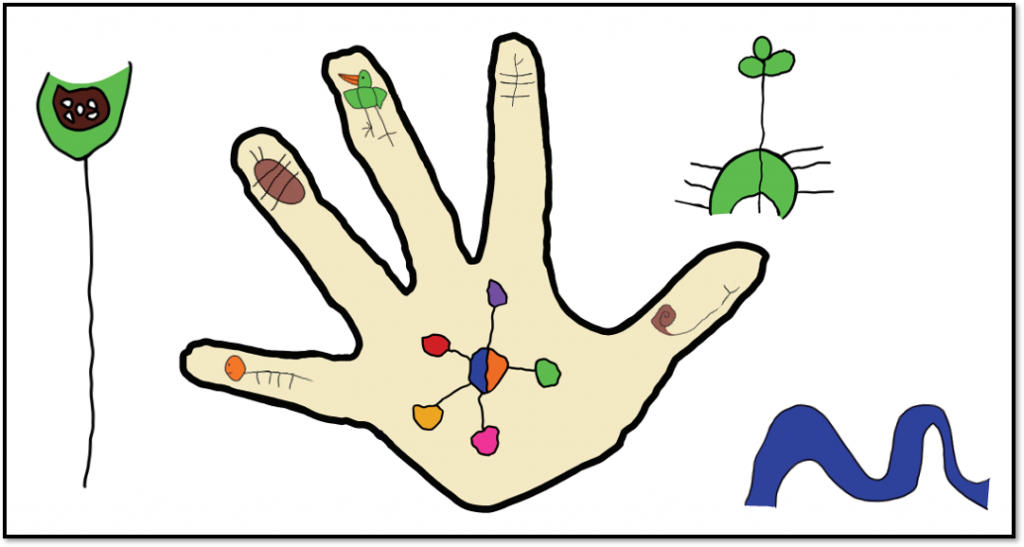
The Flag Project began as a question, ‘Why do we have four flag poles, but only three flags?” and led to a flag raising ceremony almost nine months later.
To think back on this project, I feel immense pride seeing the ‘for real life’ flag arrive. We did it! This flag represents so much more than our little school on the roof, or even Annandale. The children were truly considerate of our world when creating this flag. They insisted on ensuring that not only was our school represented, but also the people who came before us, the Aboriginal people.



This sense of consideration led to a long research process to understand flags, colour, symbols and meaning. They reflected on their relationship to the land on which we live and play and how they could develop their own symbols to represent their connection. Their respect for this place, their community and the natural world was evident throughout their work.



The Possums group are conversationalists. They rely on conversation to explore ideas, share thinking and come to decisions. This project had plenty of that. As conversation took prime position in this project, we then began to observe an innate relationship to the democratic process. Small design working groups would report to the rest of the group and seek consensus on all decisions. These were then communicated to the rest of the school for approval. The community beyond the walls of our school was also represented by our dear friend Deb Garret from Macquarie University. No decision was made without a meeting, a discussion and a vote. I became the curator of their learning as the children directed the research and design processes.
This project has reinforced my strong beliefs in the importance of early education for all children. When provided with the right tools and support, they are capable of anything.
Below is a description of the different elements of the flag as ‘written’ by the 2021 Possums (children and Educators).

We can do anything with our hands, like learn and play.
The black outline of the hand was inspired by artists like Bronwyn Bancroft, Aunty Fay Muir and Sue Lawson, and Jasmine Sarin, who all use black outlines in their work. It has a black outline for the Aboriginal people. They were here before us and we want them to know we are being kind to their land, like they were.


Our five learning groups are the outer circle, and the middle circle represents our community.
Rainbow colours represent the skin colour of our community. Also, because they look pretty.





The children insisted it was important that the Explore & Develop animals were represented as important parts of our school community. As design choices unfolded, they were given privileged positions on each finger of the hand. It was important that the broader Annandale community knew that we have animals as part of our little school on the roof community.

Badu
Meaning waterway in the Sydney language, it names the middle indoor classroom space. It is also the name of the little park between Fez and the canal that runs through our favourite nature play spots. The canal follows a natural waterway that once was a creek. The canal is an important landmark for the children’s connection to this place.

Gadi
Gadi is the Sydney language word for the grass tree that populated Gadigal land before there were houses and roads. It is the name of our third indoor learning space and expresses our connection to this place and its first peoples.

Djirang
This Sydney language word describes the forest canopy or treetop. As you gaze out our window fences, it is easy to imagine that we are atop a tree. It is the name given to our large outdoor learning space.

Ngurra
Ngurra is the Sydney language word for nest and is the word we use to name the indoor and outdoor spaces used by our youngest friends. The Possum children thought it would be appropriate to place the Ngurra, surrounded and protected by the Djirang because the older children need to look after Ngurra children.
Troy, J. (1994). The Sydney Language. Panther Publishing and Printing. Canberra: Australia
Kirsty Piendl and our dear critical friend Deb Garret from Macquarie University recently presented the Flag project at the REAIE Research Symposium. An article about the Flag project, written by Kirsty, will feature in REAIE’s Challenge magazine later this year.